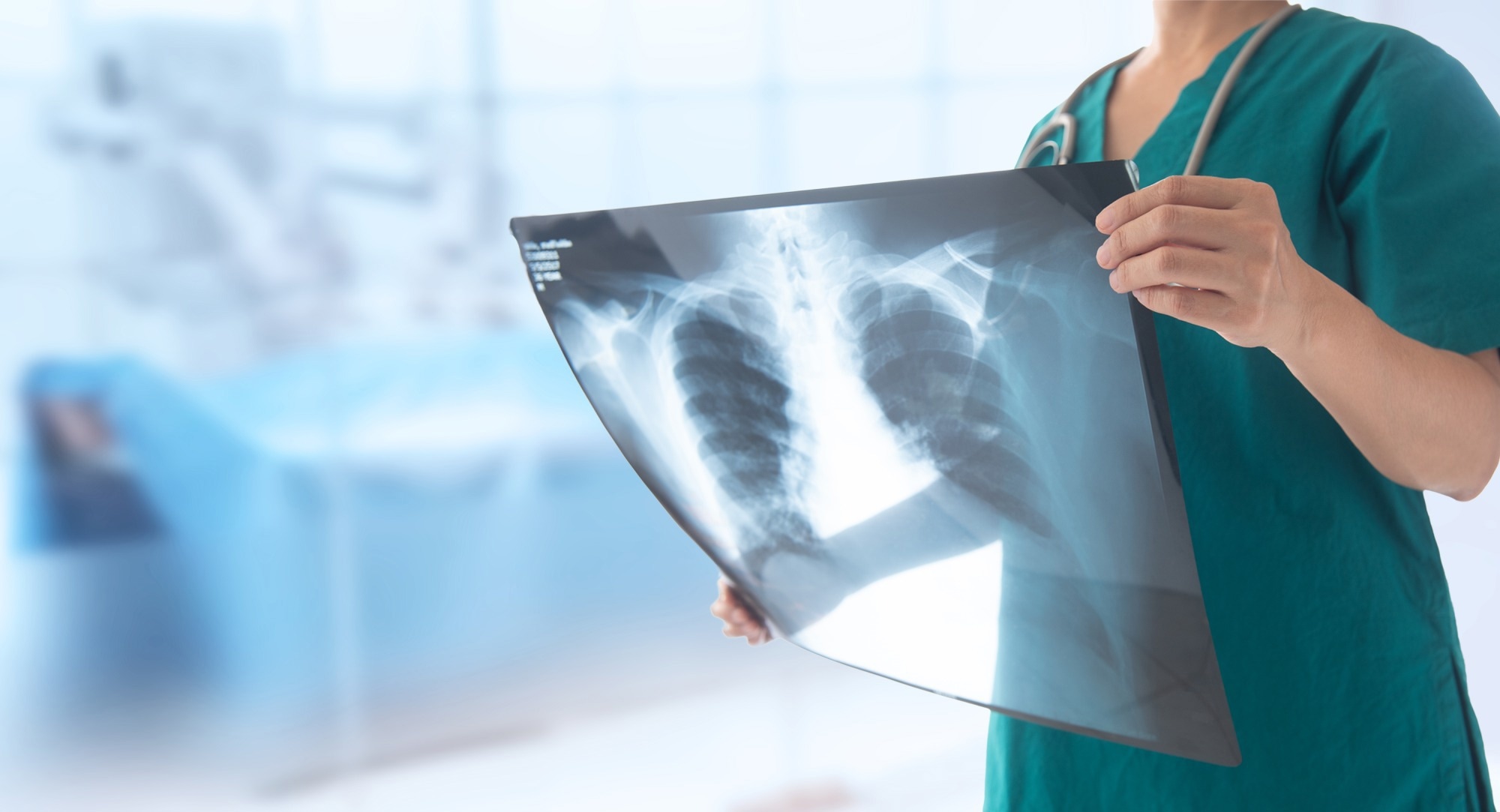There are still concerns that specific organs, particularly the lungs, may sustain long-term damage post-infection. Several prospective research and meta-analyses have explored pulmonary consequences in individuals within one year after COVID-19 infection. However, the proportion of total CT abnormalities varies widely. This discrepancy may be attributable to the modest size of the study groups and the broad spectrum of disease severity. Additional research has demonstrated that rehabilitated individuals have varying degrees of lung diffusion impairment. Therefore, in order to detect and treat pulmonary consequences and functional damage, it is necessary to monitor these survivors.
 Study: Longitudinal Assessment of Chest CT Findings and Pulmonary Function in Patients after COVID-19. Image Credit: create jobs 51 / Shutterstock
Study: Longitudinal Assessment of Chest CT Findings and Pulmonary Function in Patients after COVID-19. Image Credit: create jobs 51 / Shutterstock
About the study
The present study assessed longitudinally alterations in chest CT abnormalities and pulmonary functioning in severe acute respiratory syndrome coronavirus 2 (SARS-CoV-2)-infected patients.
A total of 1,251 COVID-19 patients diagnosed via polymerase chain reaction (PCR) and discharged from the Wuhan Jinyintan hospital were screened for this study between 20 January 2020 and 10 March 2020. After exclusions, 144 participants were a part of the longitudinal trial study. Each participant's medical records during the acute phase of COVID-19 infection were assessed. The study cohort consisted of 62 people from a prior investigation of chest CT findings after hospitalization and at a six-month follow-up.
Eligible participants were interviewed at a six-month follow-up between 20 June and 31 August 2020, a 12-month follow-up between 20 December 2020 and 3 February 2021, and a two-year follow-up between 16 November 2021 and 10 January 2022 following symptom start. The subjects underwent a chest CT scan and a respiratory symptom questionnaire at each visit.
Almost 110 participants completed the lung function tests at six months, 103 subjects at one year, and 129 at two years. Pulmonary diffusion was considered abnormal when the lung's carbon monoxide diffusing capacity (DLco) was 75% lower than the anticipated value. The subjects underwent unenhanced chest CTs for all initial and follow-up examinations. Initial chest CT scans were performed on each subject upon hospital admission.
Results
The study results showed that 24 of 144 enrolled individuals had a prior history of smoking, whereas 31 of 144 subjects had a prior history of alcohol consumption. Almost half of the patients were also diagnosed with hypertension, cardiovascular disease, and type 2 diabetes mellitus. Most subjects were diagnosed with severe COVID-19, with 4.2% in serious condition. In 27 subjects, acute respiratory distress syndrome was diagnosed.
On two-year follow-up CT scans, approximately 56 of 144 individuals exhibited interstitial lung abnormalities (ILAs), including 33 participants having fibrotic ILAs and 23 having non-fibrotic ILAs, whereas 88 subjects displayed complete radiological resolution. ILA patients were more likely to experience respiratory symptoms, such as exertional dyspnea and cough, than those reporting complete radiological resolution. Participants with ILAs, who also underwent pulmonary function tests, were more likely to exhibit diffusion problems than those reporting complete radiological resolution. In addition, participants with fibrotic ILAs experienced residual symptoms more frequently and displayed a lower DLco than those with non-fibrotic ILAs. Other pulmonary function tests revealed no significant differences between these cohorts.
The number of subjects having a minimum of one respiratory symptom reduced from 43 patients at six months to 36 patients at 12 months to 32 patients at two years. At the two-year follow-up, exertional dyspnea was the most prevalent respiratory symptom, but mild and moderate pulmonary diffusion was reported in 29% of patients. At 12-month and two-year follow-ups, the pulmonary function markers had improved compared to the six-month follow-up. However, there were no variations between the 12-month and two-year follow-ups. The levels of DLco improved gradually over time, although the severity of DLco did not differ across the three visits.
Over time, the number of COVID-19 survivors who displayed ILAs on CT scans reduced. From six months to two years, there was no change in the number of fibrotic ILAs, although the fraction of non-fibrotic ILAs declined. Some participants who reported fibrotic ILAs exhibited persistent bronchiectasis or the development of honeycombs over time. Participants with non-fibrotic ILAs displayed persisting linear as well as curvilinear bands or GGO at the same time. At follow-up visits, residual lung abnormalities were most typically bilateral, while the CT trend shifted from ground-glass opacities (GGOs) predominant to reticulation predominant.
Overall, the study findings highlighted that at six-month, 12-month, and two-year follow-up CT scans, the detection of residual lung abnormalities and the overall CT scores decreased significantly over time, with considerable improvement in pulmonary function. Furthermore, ILAs or fibrotic ILAs were linked to prolonged respiratory symptoms and diminished diffusion function.
Journal reference:
- Longitudinal Assessment of Chest CT Findings and Pulmonary Function in Patients after COVID-19, Xiaoyu Han, Lu Chen, Yanqing Fan, Osamah Alwalid, Xi Jia, Yuting Zheng, Jie Liu, Yumin Li, Yukun Cao, Jin Gu, Jia Liu, Chuansheng Zheng, Qing Ye, and Heshui Shi, Radiology, DOI: https://doi.org/10.1148/radiol.222888, https://pubs.rsna.org/doi/10.1148/radiol.222888